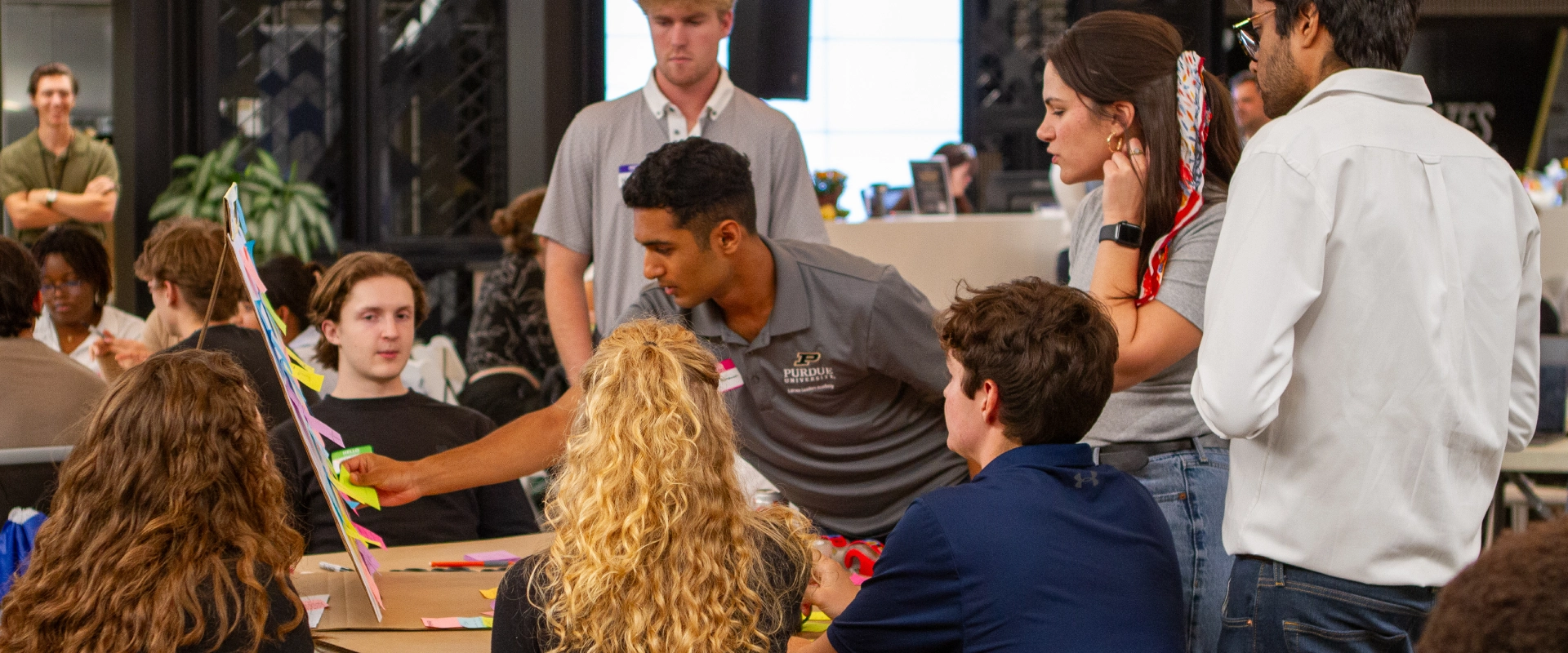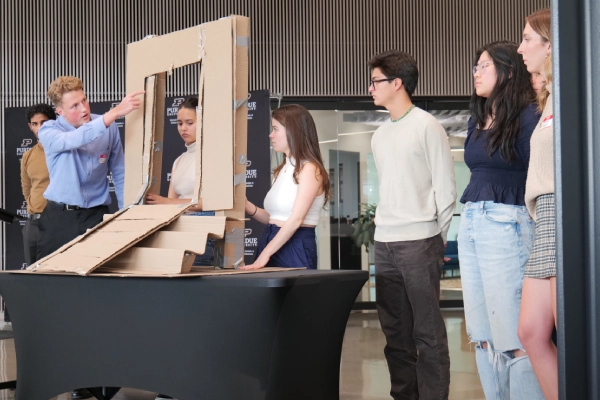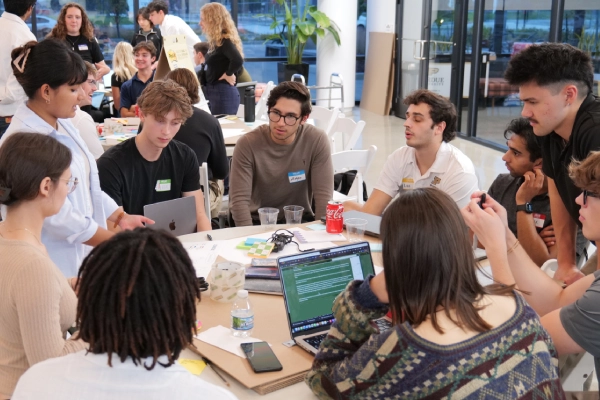
Among the foundational pillars guiding the future of Purdue University’s Mitchell E. Daniels, Jr. School of Business are commitments to integrating business with technology and providing students with transformational learning experiences. There’s also a strong emphasis on innovation, due in part to business-research partnerships that address real-world needs while producing job-ready graduates.
Those forces recently combined when the Integrated Business and Engineering (IBE) program at the Daniels School partnered with the Industrial Design (ID) program from the College of Liberal Arts to host the annual IBE + ID Innovation Hackathon on Purdue’s West Lafayette campus.
dormakaba, one of the top companies for access control and securing solutions in the global market, co-sponsored the event. Providing secure access to buildings and rooms with over 150 years’ experience and millions of products installed worldwide, dormakaba offers a comprehensive portfolio of products, solutions, and services for everything related to doors and secure access for hotels, healthcare, education, shops, lodging, entertainment facilities, sports centers, airports, home or office. For the second straight year, the company provided funding for the event, a real-world problem statement addressing aspects of disability access in the modern world, company representatives acting as coaches, mentors and judges, and prizes for the winning teams.
Purdue ID alumnus Justin Crotzer, vice president of product development at dormakaba, led his company’s involvement in the event. “It gives us the ability as a business to understand more about what Purdue is doing to develop its programs and students and to learn how to partner with the university in a positive way,” he says. “We also benefit from the boundless creativity of the students and the unique solutions they develop by thinking outside the box.”
Using the Hackathon’s “Design Good Now” platform, ID seniors teamed with IBE sophomores in designing public doors and entrances smarter and safer for people with disabilities so that they can access spaces without help from others. The students conducted a process that included hands-on empathy research, bodystorming, affinity mapping, sketch-noting ideas, cardboard prototyping, and role playing prior to presenting their products 12 hours later in five-minute presentations.

“By working together, the students can look at the problem from a business perspective, an engineering perspective, and a design perspective. It also ensures that the solution is integrative and something that will work for everyone involved.
— Dilip Chhajed, Associate Dean for Online Programs and Strategic Initiatives, Executive Director, IBE Program
According to Dilip Chhajed, associate dean for online programs and strategic a and executive director of the IBE program, the platform aims to bring together universities, communities, and industries from around the world to take on real-world challenges. It emphasizes “design by action,” as well as pursuing projects across different disciplines, expertise, and great distances by using the latest technology for collaborative work that demonstrates a more effective and efficient design process. Teams worked on design intents and solutions, learned innovative design methods to accelerate the development process, and used technology-based design tools to build visible and tangible objects.
“They think about their customers, they think about all the constraints, they think about different solutions, and then they come up with the best solution, keeping in mind what is feasible, what can be implemented, what it costs and what profit it will make for the company,” Chhajed says. “This creates a mindset where students learn how to be innovative, how to work in teams, how to listen to each other, and to how influence others with their ideas.”
Chhajed says it’s as much about the journey and process as the outcome. “By working together, the students can look at the problem from a business perspective, an engineering perspective, and a design perspective,” he says. “It also ensures that the solution is integrative and something that will work for everyone involved.”
Jess Franta, director of the Business Partnerships Office at the Daniels School, says dormakaba is an ideal partner for the event. “Their team is highly invested in our students and it's become a really great opportunity for the company to showcase the culture of who they are and why they want to interact with academics, but also what it's like to solve real challenges in the area of business,” she says. “They're also interacting with talent before it's time to hire, so they get feedback on how to retain talent, how to connect with talent, and how to move that into managing and retaining their future workforce.”

Another benefit is the direct feedback the Daniels School gets from its industry partners about its curriculum. “We know we're preparing our students to meet the future business challenges by these types of interactions, but we also gain insight into what tools our students should be utilizing on a daily basis, how they should stage a project, as well as how they can think about team dynamics,” Franta says.
Nicole Welsh (IBE ’26) says interacting with industrial design students was particularly enlightening. “It was a great opportunity to see how they work and the ways that an IBE major can contribute to their process,” she says. “I've never approached a case or business challenge from a design perspective, so learning how to do that will give me the opportunity to apply the process to other endeavors.”
Tylen Flemming (IBE ’26) had a similar experience. “It’s been great working with industrial design students,” he says. “They have the skills and the knowledge to take the ideas we have in our head, put them on paper, and make them work. And helping to create a product that helps people with disabilities has really been rewarding.”